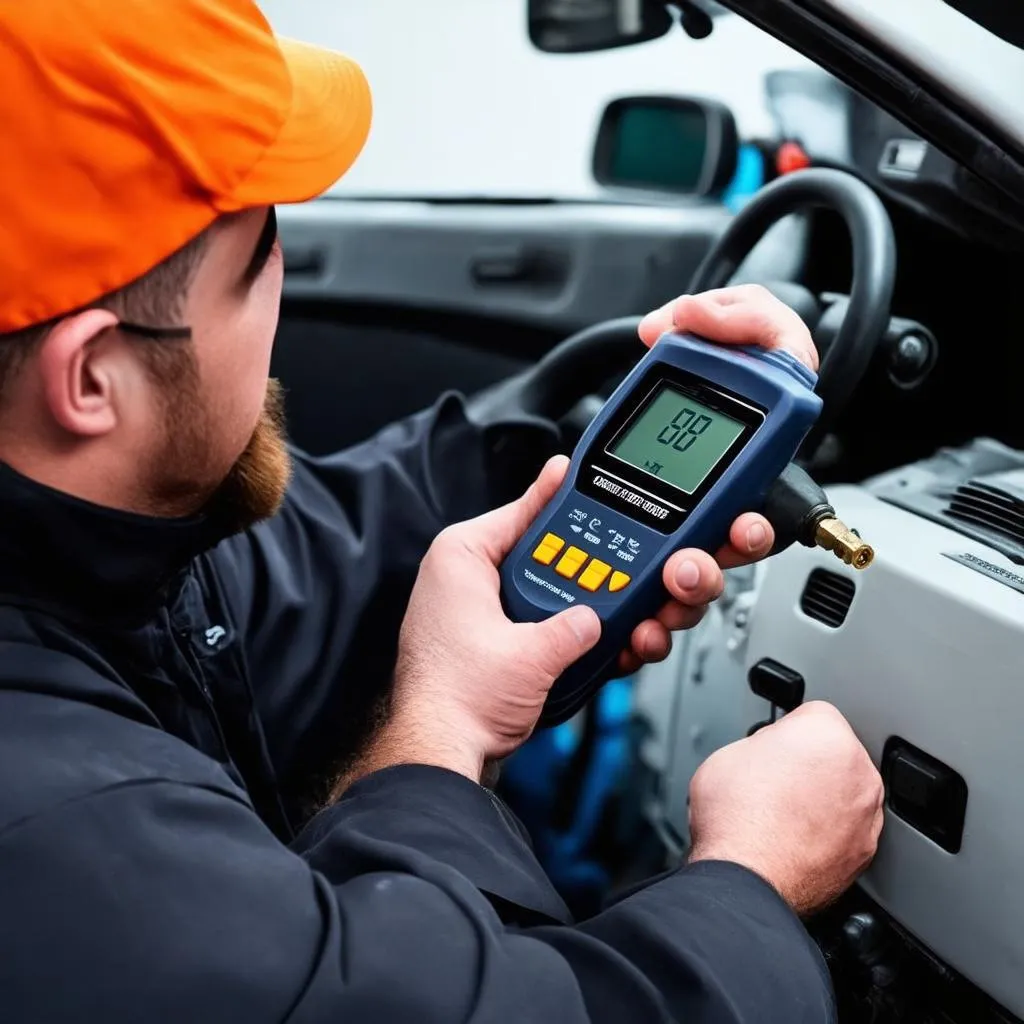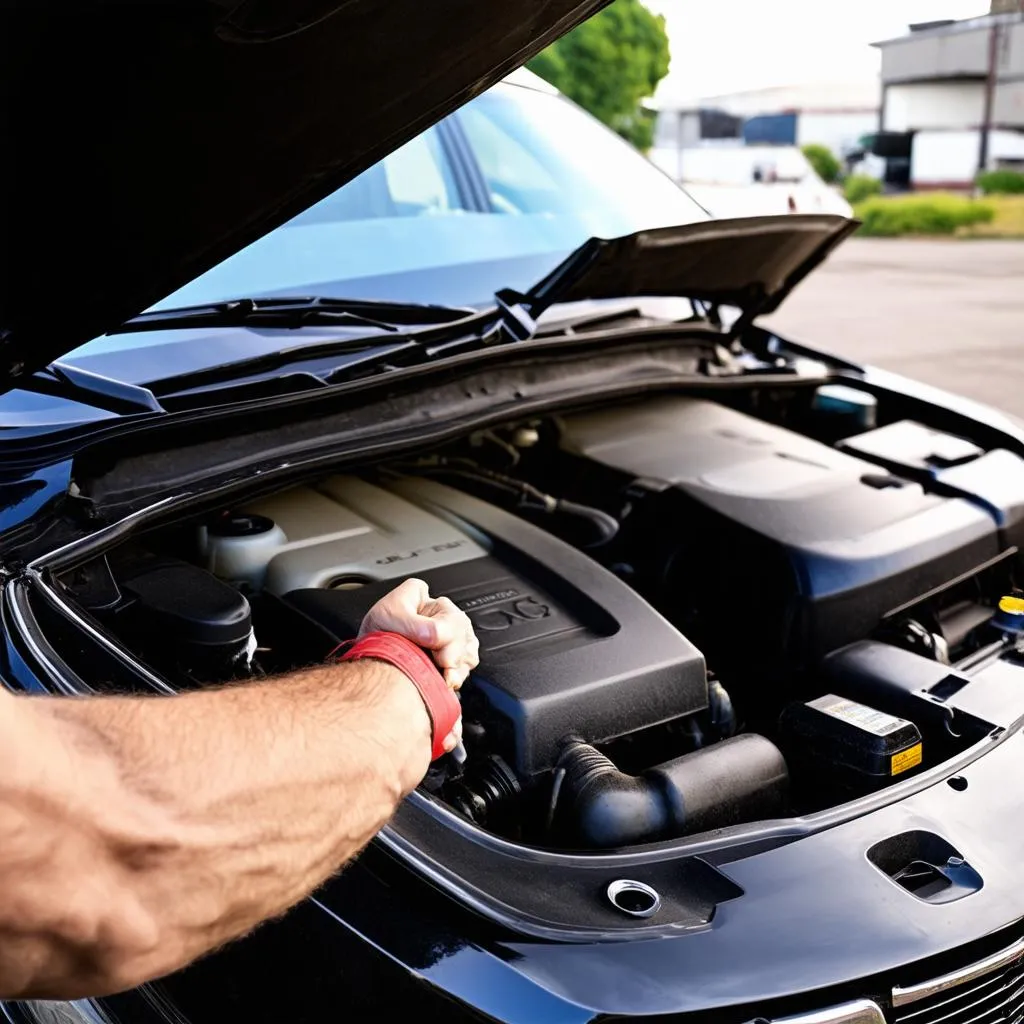Have you ever felt that sinking feeling when your car’s check engine light flashes, whispering tales of potential trouble ahead? Many drivers find themselves puzzled by these cryptic warnings, often ending up lost in a sea of technical jargon. Today, we’ll unravel the mystery of the P0133 code, a common culprit that plagues many European car owners.
What Does P0133 Code Mean?
The P0133 code, also known as “O2 Sensor Circuit Slow Response (Bank 1 Sensor 1),” signifies a problem with your car’s oxygen sensor. This sensor plays a crucial role in ensuring optimal engine performance and fuel efficiency by measuring the amount of oxygen in the exhaust gases. Think of it as a vital part of the engine’s “breathing” system.
Understanding the Role of the Oxygen Sensor
The oxygen sensor, often referred to as the “lambda sensor” in European car jargon, sits in your exhaust system and sends information to the engine control unit (ECU). The ECU uses this information to adjust the air-fuel mixture entering the engine, ensuring a perfect balance for optimal combustion.
Imagine your car’s engine as a finely tuned orchestra. The oxygen sensor acts as the conductor, directing the symphony of fuel and air to create a harmonious combustion process. If the conductor falters, the music suffers, and your engine’s performance takes a hit.
Why Does P0133 Code Happen?
The P0133 code typically emerges when the oxygen sensor struggles to provide accurate readings, resulting in slow or delayed responses to changes in the exhaust gas composition. This can be attributed to various factors, including:
- A Faulty Oxygen Sensor: The most common culprit is a faulty oxygen sensor itself. Over time, these sensors can degrade, become contaminated, or experience internal failures, hindering their ability to measure oxygen levels accurately.
- Wiring Problems: Damaged or corroded wiring connecting the oxygen sensor to the ECU can disrupt the flow of information, leading to inaccurate readings and triggering the P0133 code.
- Exhaust Leaks: Cracks or holes in the exhaust system can cause inaccurate readings by altering the oxygen concentration reaching the sensor.
- Engine Problems: Issues within the engine, such as a faulty fuel injector or a clogged catalytic converter, can indirectly affect the oxygen sensor’s readings, leading to the P0133 code.
How to Diagnose P0133 Code:
While the P0133 code often points to a faulty oxygen sensor, it’s essential to perform a proper diagnosis to pinpoint the exact cause. A qualified mechanic equipped with a diagnostic scanner can help identify the root of the problem.
What to Do When P0133 Code Shows Up?
Don’t panic! The appearance of the P0133 code doesn’t necessarily mean your car is on the verge of collapse. However, it’s essential to address the issue promptly to avoid potential performance issues and fuel inefficiency.
Solutions for P0133 Code
The solution for a P0133 code often involves replacing the faulty oxygen sensor. However, it’s crucial to ensure that the underlying cause is addressed. This may involve repairing faulty wiring, fixing exhaust leaks, or addressing other engine problems.
Additional Tips to Prevent P0133 Code:
- Regular Maintenance: Performing routine maintenance, including inspecting and cleaning the oxygen sensor, can help prevent premature failure.
- High-Quality Fuel: Using high-quality fuel can minimize the risk of contamination and ensure optimal engine performance.
- Avoid Engine Stress: Aggressive driving and frequent harsh starts can accelerate the wear and tear on the oxygen sensor.
Common Questions About P0133 Code
Q: Can I Drive With the P0133 Code?
You can drive with the P0133 code, but it’s advisable to get it checked as soon as possible. Driving with a faulty oxygen sensor can lead to reduced fuel efficiency, engine performance issues, and even potential damage to the catalytic converter.
Q: How Expensive is a P0133 Code Repair?
The cost of repairing a P0133 code can vary depending on the cause and the specific make and model of your car. The cost of replacing the oxygen sensor itself can range from $100 to $500, while labor costs and additional repairs may add to the overall expense.
Q: How Long Does a P0133 Code Repair Take?
The time required to repair a P0133 code depends on the complexity of the problem and the availability of parts. In many cases, replacing a faulty oxygen sensor can be done within a few hours.
Conclusion
The P0133 code may seem like a cryptic message from your car, but it’s not a cause for despair. By understanding its significance, identifying the potential causes, and taking prompt action, you can ensure your European car continues to run smoothly and efficiently. Remember, a healthy oxygen sensor is crucial for a harmonious symphony of performance and fuel efficiency.
 oxygen sensor repair
oxygen sensor repair
 car maintenance
car maintenance
If you’re struggling to diagnose or resolve the P0133 code, don’t hesitate to reach out to us at techcarusa.com. Our team of experts is available 24/7 to guide you through the process and ensure your European car is running at its best.